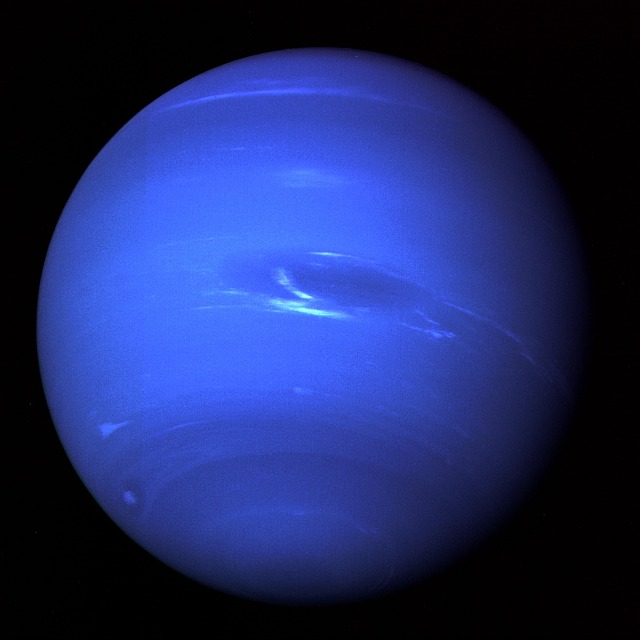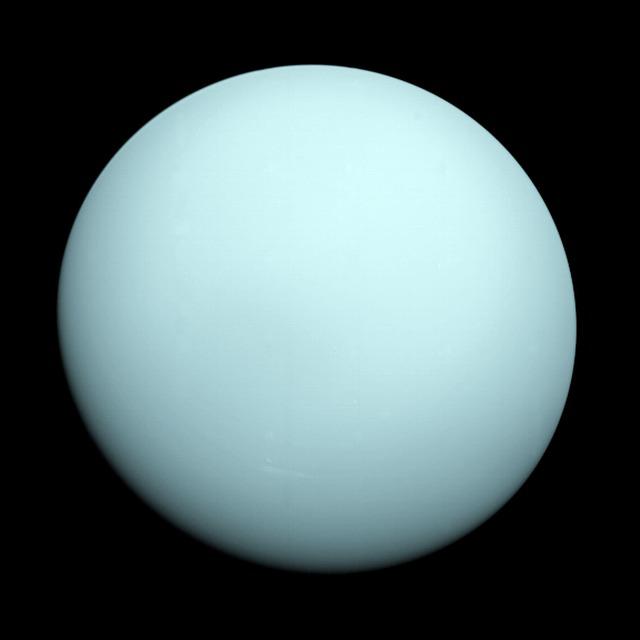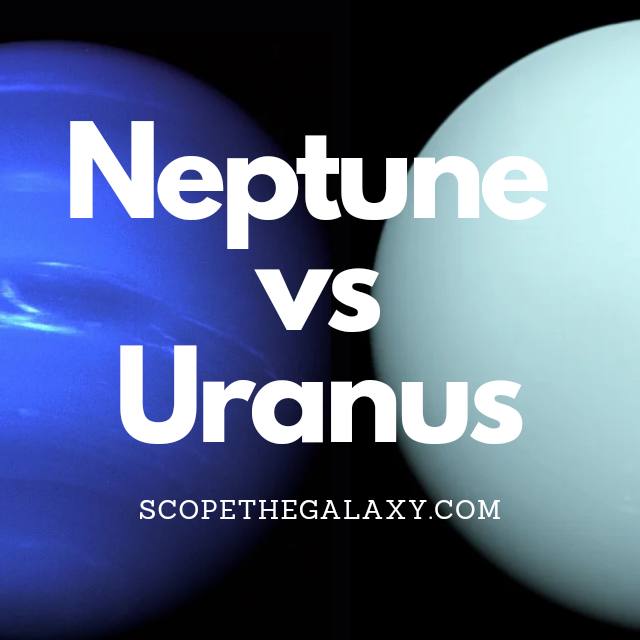*This post may contain affiliate links. This means we may make a commission if you purchase an item using one of our links*
Neptune and Uranus are often compared to one another due to their similarities in composition and due to both falling under the ice giant moniker, however, they still very different when you take into account a number of their other features.
The main differences between Neptune and Uranus is that Neptune is a deep blue color whist Uranus is cyan blue, Neptune is the densest ice giant whereas Uranus is not as dense, Uranus has 27 moon whilst Neptune has 14 moons, Uranus has an axial tilt of 98 degrees whilst Neptune’s is 28 degrees and, Neptune orbits the Sun in 165 years whilst Uranus does so in 84 years.
These are some of the core differences but, it doesn’t cover all of them so, for a more thorough breakdown of the similarities and differences between the two, continue reading.
What Is The Planet Neptune?
Table of Contents

Neptune is the 8th farthest planet from the Sun and ranks among the bigger planets in our solar system. As the 8th farthest planet from the Sun, it does take Neptune a very long time to complete 1 orbital cycle around the Sun.
This takes 165 years to complete which is far longer than the 16 hours needed to complete 1 full day/full spin around the axis.
In regards to its composition, Neptune is mostly made up of a thick swath of water closer to the center, methane, ammonia, hydrogen and helium molded around its Earth sized core.
As a result of the excess amount of methane and the inclusion of another undiscovered element within the atmosphere, Neptune’s color is a far deeper blue than the likes of Uranus, which also has a methane based atmosphere.
The planet is 49,244km in diameter, making it roughly 4 times Earth’s diameter, and would allow around 57 Earth sized planets to fit inside it. This also makes Neptune the 4th largest planet in our solar system.
Neptune is very cold, which is mostly down to its distance from the Sun, where its atmospheric temperature sits between -220 to -230 degrees Celsius. Its core is far hotter coming in at 5,100 degrees Celsius and is the very likely cause for the liquid water present within the planet.
Subsequently, the erratic temperature and gaseous composition of Neptune, is what constitute towards its turbulent behavior.
In fact Neptune has the fastest winds in our solar system, producing some that eclipse speeds of 2,000km per hour. The fastest winds on Earth would only be a fifth of these speeds at most.
At this moment in time we have discovered 14 moons orbiting Neptune and have also observed 5 thinner rings surrounding the ice giant.
What Is The Planet Uranus?

Uranus is the 7th farthest planet from the Sun and the 3rd largest planet in our solar system, coming in at a diameter of 50,724 km. This means that roughly 63 Earth’s could fit inside this ice giant.
In regards to why this cyan blue planet is referred to as an ice giant, it’s down to it’s composition. Uranus is made mostly of methane, ammonia and water with its atmosphere mostly consisting of hydrogen and helium, much like the Sun, and the other giant planets in our solar system.
Due to its distance from the Sun, it takes Uranus 84 years to complete one orbit our central star, whereas it’s axial rotation is much faster than even our Earth at 17 hours per rotation.
As a result of its distance from the Sun, ice based composition and faster rotation levels, Uranus is far from an ideal place to live in let alone have the potential to support life.
Its base temperature is generally a chilling -190 to -200 degrees Celsius and its rocky core, although hot, is still on the cooler side for a large planet sitting around the 5,000 degrees Celsius range.
The planet’s winds are also very fast often hitting 900 km/h, which is roughly twice that of Earth’s most powerful turbulent wind speeds.
In regards to the moons surrounding this cyan planet, we’ve discovered 27 small ones orbiting it. Furthermore, it has 13 rings surrounding it which also means Uranus has the most abundant collection of rings surrounding in our solar system, which is even more than Saturn.
One of the Uranus’ most unique features would include the manner in which it rotates around its axis. As opposed to the slightly angled rotation that the likes of Earth, Saturn and most other planets display, Uranus’ axis is positioned at a 98 degree angle.
What this means is this ice giant completes an axial rotation on its side as opposed to the relatively up straight positioning of most of the other planets in our solar system.
How Are Neptune And Uranus Similar?
Uranus and Neptune are similar in a variety of ways, some of which include below:
- Both planets have an atmosphere generally composed of hydrogen and helium.
- Both planets are orbiting the Sun.
- Neptune and Uranus are both ice giants due to the presence of water and ice on their bodies.
- Both have a hotter central core.
- Both have multiple moons.
- Both have rings around them.
- Both are a spherical shape.
Differences Between Neptune And Uranus
As for the differences, they would include following:
- Uranus has 13 rings around it whilst Neptune has 5.
- Neptune is the densest gas giant in our solar system whilst Uranus is 3rd of all 4 gas giants.
- Uranus has 27 moons whilst Neptune has 14.
- Uranus is cyan blue in color whereas Neptune is a deeper blue color.
- Uranus is slightly bigger than Neptune with a diameter of 50,724km whereas Neptune is 49,244km.
- Neptune is the 8th farthest planet from the Sun whilst Uranus is 7th. This mean a single orbit around the Sun will take Neptune 165 years whereas Uranus will complete a cycle in 84 years.
- Neptune will rotate around its axis every 16 hours whilst Uranus will do so in 17 hours
- Neptune is the windiest planet in our solar system with winds achieving 2,000 km/h whereas Uranus’ wind speeds average 900km/h.
- Neptune has a colder atmosphere than Uranus but, its core is estimated to be roughly 100 degrees Celsius hotter than Uranus.
- Uranus rotates on its side with an axial position at 98 degrees whilst Neptune’s axial position is 28 degrees.
- Uranus has a stronger magnetic field with a gauss strength of 0.23 whilst Neptune is only 0.13 gauss.
Summary
Both planets at blue, similar in size and even in composition when you take into account the abundance of methane in their atmosphere and the blue look however, they clearly have their fair share of differences too.
Whether it be their discrepancies in axial tilt, the number of moons that orbit them or their erratic wind temperatures, If everything is taken into account, there are vast number of distinct feature that still separate the two.


